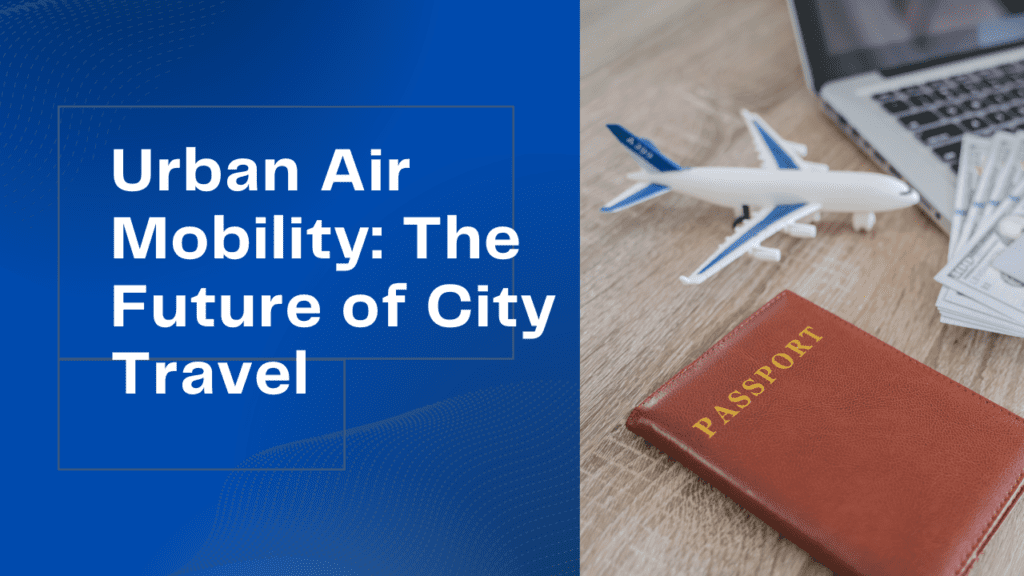Urban Air Mobility Revolutionizing City Travel

As someone who has spent far too many hours stuck in traffic, the idea of being able to zip across town in a flying taxi sounds pretty good. Like many people though, I’ve always dismissed those visions of urban air mobility transit as far-fetched science fiction. Flying cars have been “just around the corner” since the 1950s – yet I still can’t get a taxi to show up on time.
But a quiet revolution has been building over the past decade that aims to make those sci-fi dreams an everyday reality. A handful of pioneering startups, along with some of the biggest names in aviation and tech, are racing to develop and launch the first passenger “air taxis” for cities around the world.
Why flying taxis, and why now?
First, have you noticed city traffic getting worse every year? I swear my drives take longer every day. Urban population growth and lack of mass transit options in most cities have jammed highways and streets to an agonizing standstill. Commuters waste hours in stop-and-go traffic every week. Even folks taking the bus or metro often crawl along congested roads.
Second, battery and automation technology has finally matured enough to make electric vertical takeoff aircraft viable. Startups have built prototypes that merge drone and helicopter capability – able to lift straight up and then fly efficiently at higher speeds. These “eVTOLs” promise to be much quieter and cheaper to operate than conventional choppers.
Combine traffic misery with an emerging solution, and the appeal of sidestepping gridlock by flying is self-evident. A number of deep-pocketed corporate partners and investors also see huge potential in aerial mobility.
When can I hail an air taxi?
A slew of well-funded startups with cool names like Joby, Lilium, Volocopter, Ehang, and Archer are locked in a high-speed race to get their electric aircraft certified and launch short-hop air taxi routes in major cities around 2025.
Archer Aviation’s demonstrator Maker has already flown test pilots to validate technologies for their planned 4-passenger air taxi. Their production model Midnight is expected to launch service first in traffic-choked urban centers willing to participate in pilot projects – with Los Angeles, Miami, and Singapore leading contenders.
Established aviation titans Airbus, Boeing, and Bell are advancing their own prototype eVTOLs to carve out chunks of this brand-new transportation market. Meanwhile rideshare giants Uber and Hyundai are partnering to develop supporting infrastructure on the ground.
Clearly, there is growing momentum and serious investment behind urban air mobility.
A solution for traffic woes?
For city dwellers frustrated with congestion below, the Skyway promises a rapid new travel option. Air taxi networks could connect suburbs directly with business districts in 15 minutes instead of hour-plus slogs through gridlock. Self-flying urban mobility pods may become commonplace features dotting the horizon – but a lot needs to happen first.
Air taxi companies still face huge obstacles around regulation, infrastructure, public acceptance, and technology maturation. Securing landing pads on top of metro high rises is just one logistical challenge ahead along with other things like cybersecurity concerns.
Clear guidelines from aviation oversight agencies are needed to license pilotless aircraft for commercial travel. Software and sensors enabling autonomous flight must still improve substantially before the safety bar is cleared for public use without pilots.
When pigs fly
Despite the momentum, nobody can say for certain whether an on-demand urban flight will take off on any large scale over the next decade or hover at the periphery. Early technical setbacks or even a single high-profile crash could certainly dash the optimistic timetables of air taxi boosters. Negative public reaction to unpleasant noise or intrusive aircraft cluttering skies would also dampen enthusiasm.
As always, inventors tend to be far ahead of regulators and the general public when it comes to embracing their creations. Imagining a convenient new mobility option is the easy part – actually getting comfortable being whisked around metropolitan skies in a self-piloting pod will take some work!
Even in an optimistic scenario, air taxis may only ever serve a niche market in select cities rather than completely revolutionizing mobility. Much will depend on early public experiences with the pioneering services.
Conclusion
I’m trying my best to curb my enthusiasm – but fess up, wouldn’t zipping over traffic jams in a flying taxi transform your work commute? Quieter and cheaper-to-operate electric aircraft automatically ferrying passengers across metro areas could become the first promising model for mass aerial transport.
Despite the remaining hurdles, I’m cautiously optimistic entrepreneurs and investors will create enough momentum to finally get the flying car off the runway after decades of false starts. Major breakthroughs often seem unlikely right up until the moment they appear and quickly revolutionize sectors of society. Here’s hoping the days of urban flight move from unlikely to extraordinary sooner than I think!
Read More:






